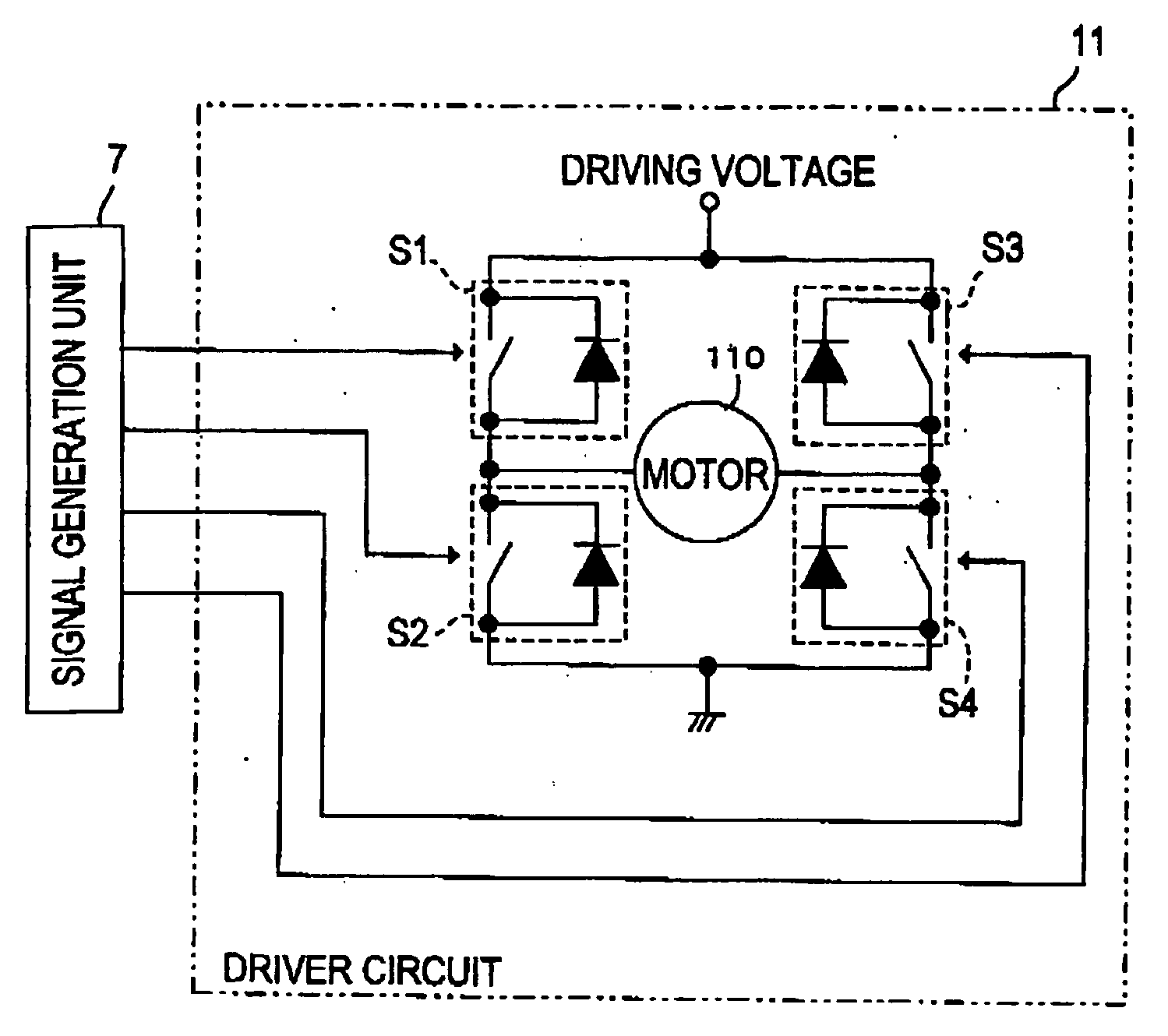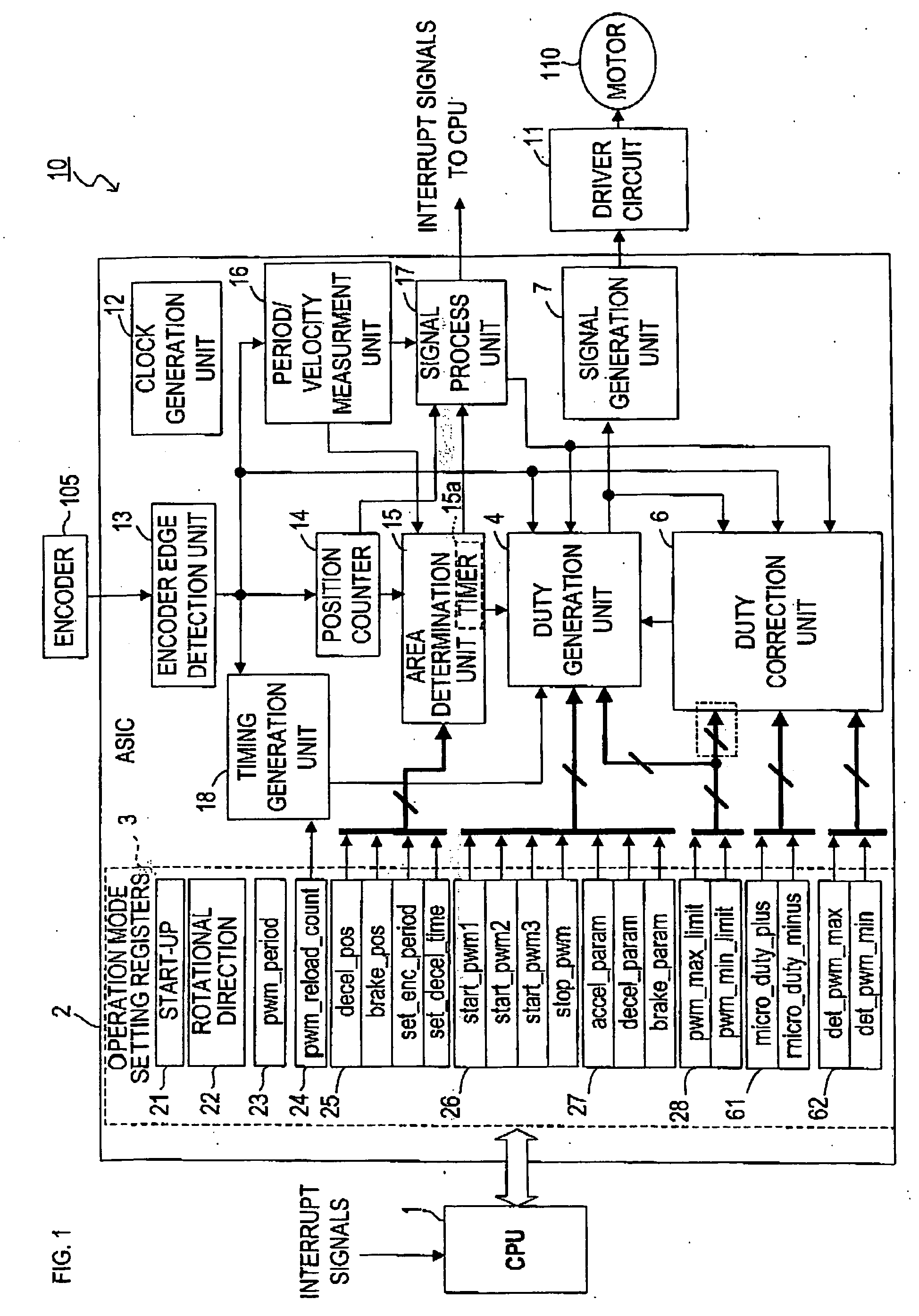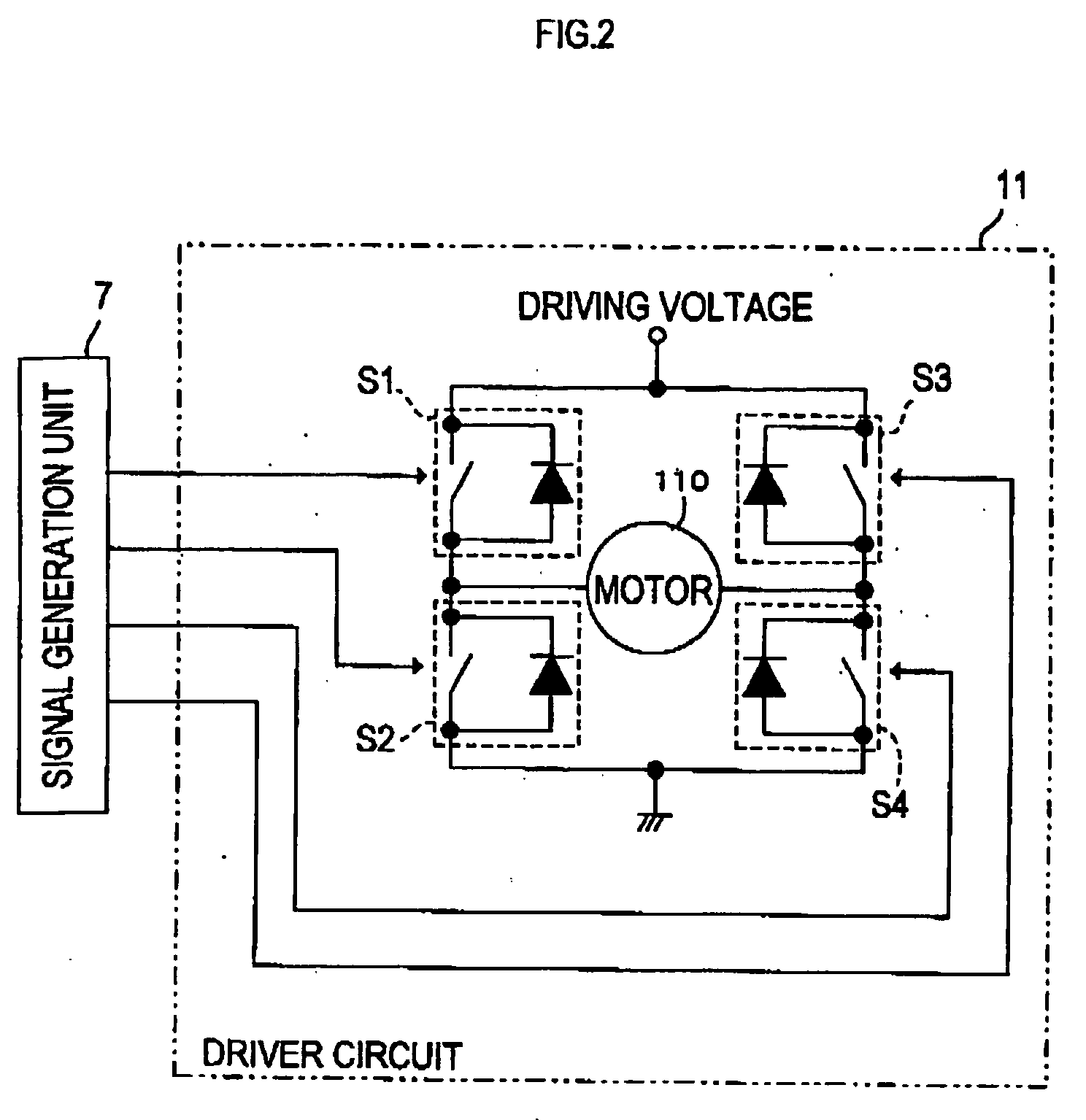Motor control method and control device
a control method and motor technology, applied in the direction of electric programme control, program control, instruments, etc., can solve the problems of slow driving speed of the driving target, inability to achieve stable operation, and longer time for generating necessary torque, etc., to achieve the effect of driving stably
- Summary
- Abstract
- Description
- Claims
- Application Information
AI Technical Summary
Benefits of technology
Problems solved by technology
Method used
Image
Examples
first embodiment
[0115] [First Embodiment]
[0116] A motor control device 10 in FIG. 1 is installed in an inkjet printer, for example, described in FIG. 70 in order to control a (DC) motor 110 which drives a carriage 102. Amongst all types of control on the motor 110, minimal velocity control, which is conducted when the carriage 102 moves to a right side and capping of the carriage 102 is conducted in a standby area after recording is completed, will be described in the present embodiment.
[0117] The minimal velocity control of the motor 110 conducted by the motor control device 10 of the present embodiment is basically the same as the control method described in FIGS. 71A and 71B. When driving is initiated, a PWM value is set to a predetermined start PWM value (start_pwm1) at a time of driving initiation, subsequently the PWM value is increased by a constant PWM increment value (accel_param) during driving in every constant period Tp. When an encoder edge is detected and encoder edge signals (enc_tr...
second embodiment
[0194] [Second Embodiment]
[0195]FIG. 14 is a block diagram showing a schematic structure of a motor control device 140 of the second embodiment. In the aforementioned first embodiment, the initial PWM value after reset at the time of encoder edge detection is not constantly set to start_pwm1, but changed corresponding to the PWM value when the edge is detected. The distinct difference of the second embodiment from the first embodiment is that a rate of change to increase a PWM value in constant period Tp is not fixed at accel_param / Tp, but the rate is changed at the time of every encoder edge detection corresponding to an edge interval (enc_period), which is time between a previous edge detection and a current edge detection.
[0196] Specifically, in the present embodiment, a PWM increment value (a_param) during driving is not fixed at the initial value of the PWM increment value (accel_param) during driving, but changed corresponding to an edge interval (enc_period). The following d...
third embodiment
[0319] [Third Embodiment]
[0320]FIG. 41 shows a schematic structure of a motor control device 810 of the present embodiment. In the present embodiment, in order to control the motor 110 (and further controlling the carriage 102) upon capping, correction data (hereinafter, referred to as “initial PWM value”) for changing the start PWM value (start_pwm1) into a proper value is set in advance in accordance with the position of the carriage 102 (more particularly, based on the load of the motor 110 at the position), based on the assumed fluctuation in the motor 110 load during the drive of the carriage 102. Furthermore, the initial PWM correction value for each position is stored in the profile storage unit 9 as an initial PWM correction value profile (cmp_array). This “position” is a position where an encoder edge is detected. In other words, an arrangement of the respective initial PWM correction values corresponding to the respective positions where encoder edges are detected is profi...
PUM
 Login to View More
Login to View More Abstract
Description
Claims
Application Information
 Login to View More
Login to View More - R&D
- Intellectual Property
- Life Sciences
- Materials
- Tech Scout
- Unparalleled Data Quality
- Higher Quality Content
- 60% Fewer Hallucinations
Browse by: Latest US Patents, China's latest patents, Technical Efficacy Thesaurus, Application Domain, Technology Topic, Popular Technical Reports.
© 2025 PatSnap. All rights reserved.Legal|Privacy policy|Modern Slavery Act Transparency Statement|Sitemap|About US| Contact US: help@patsnap.com



